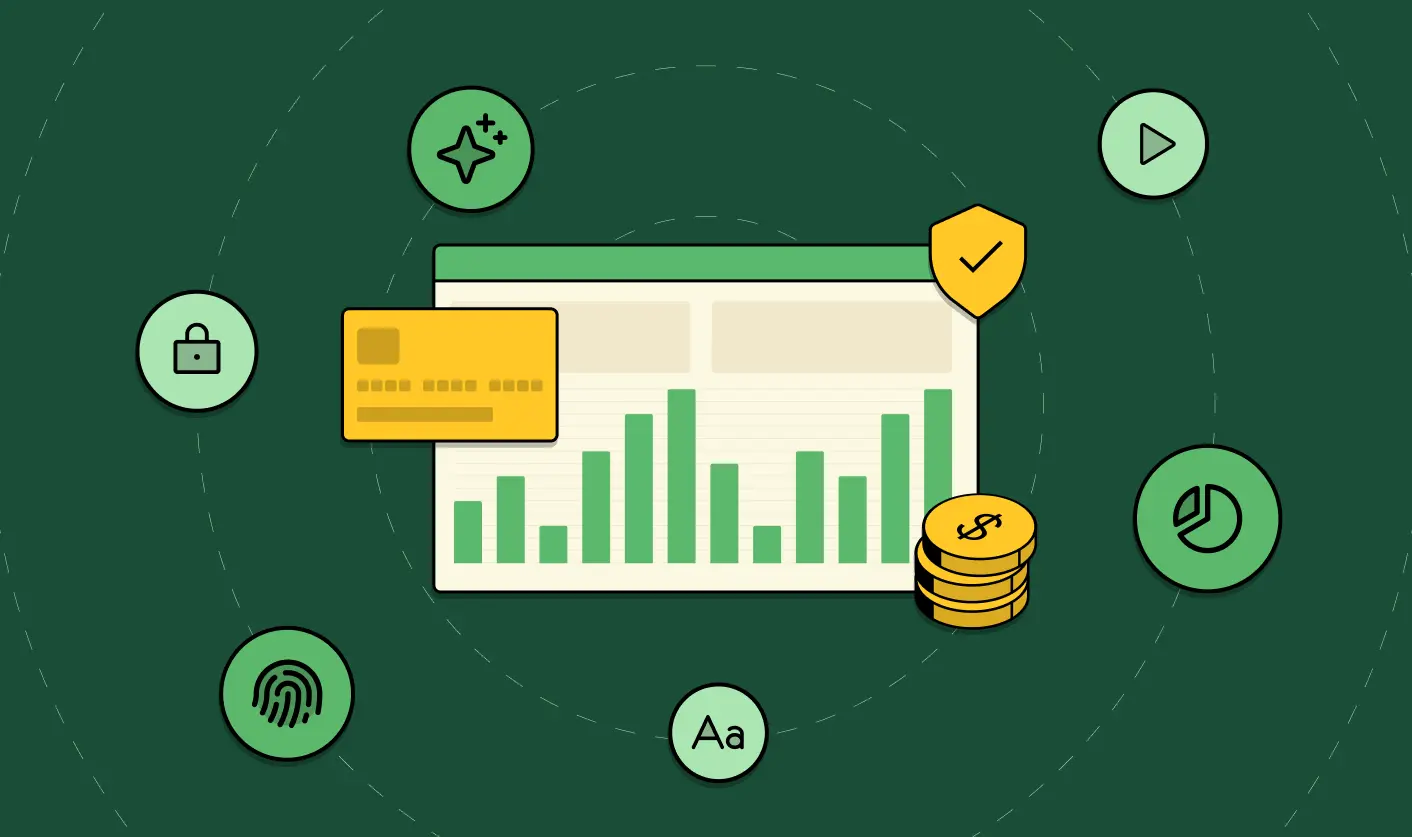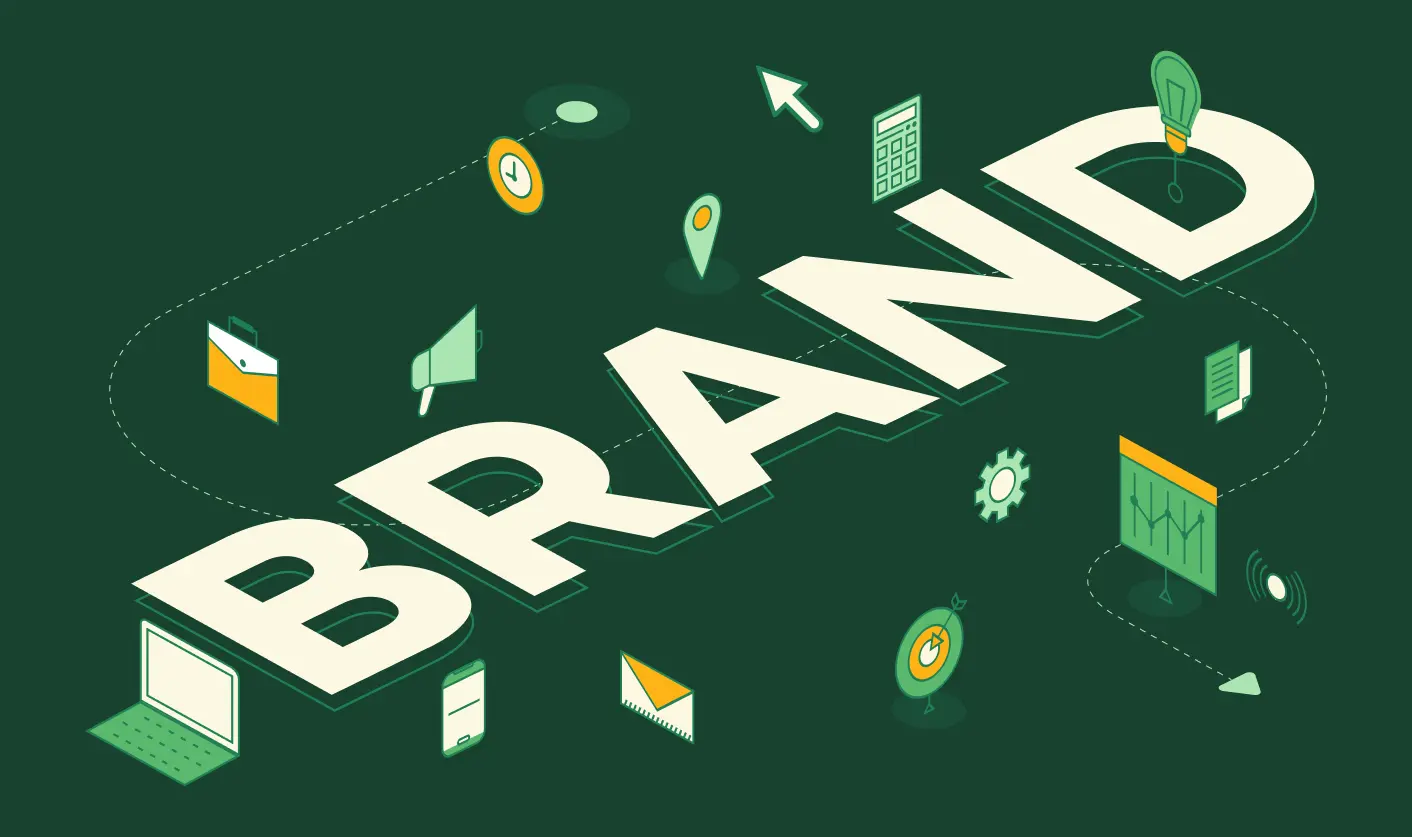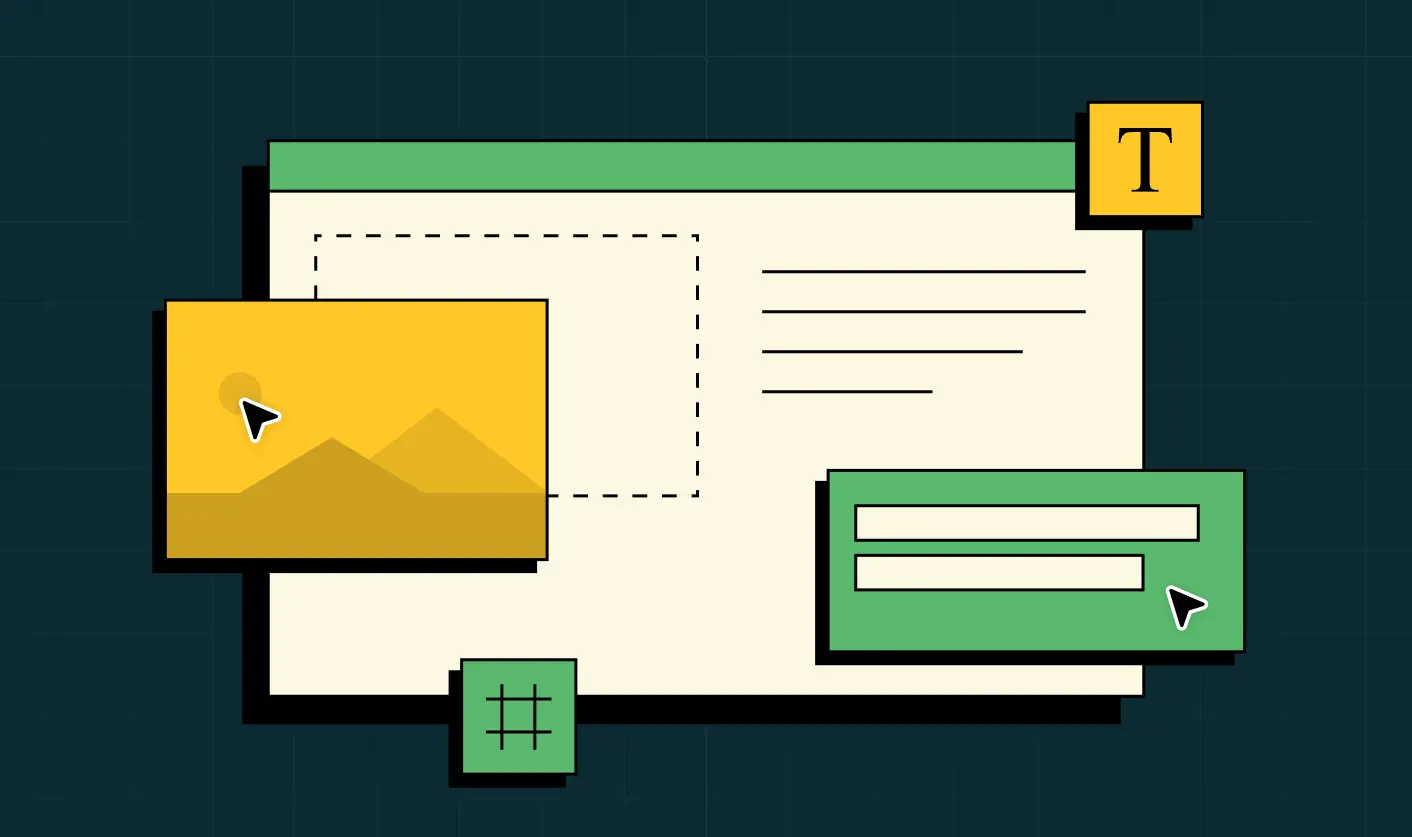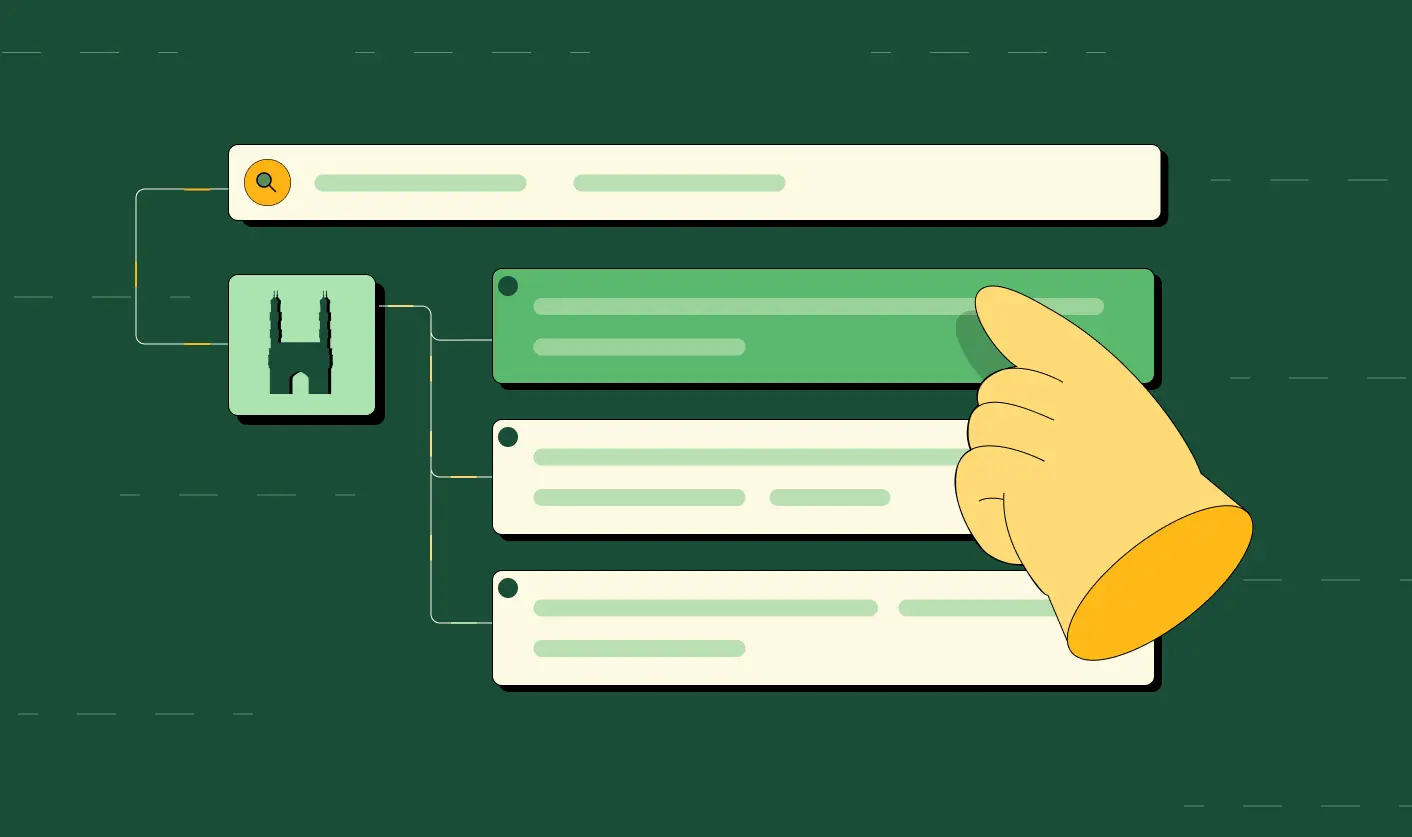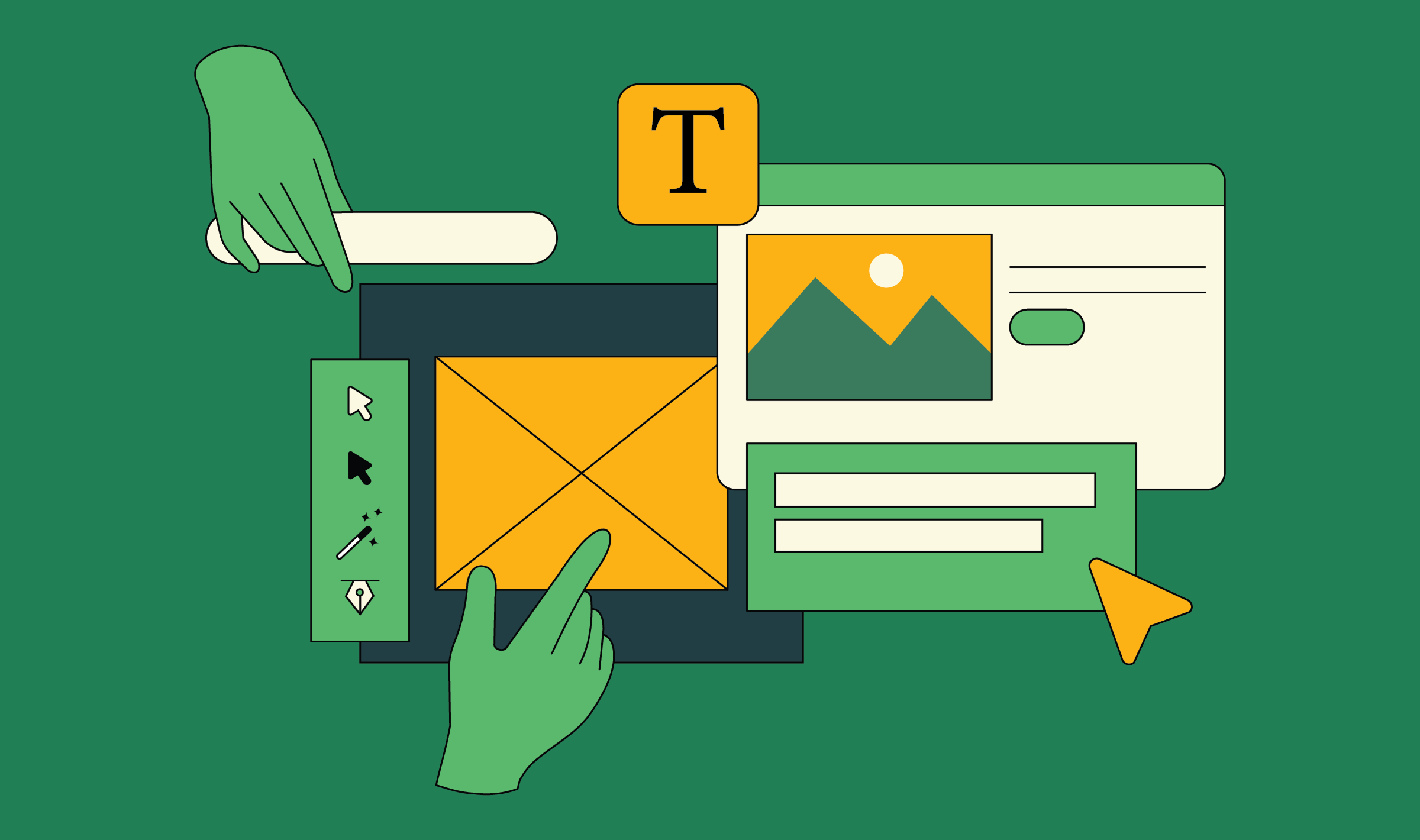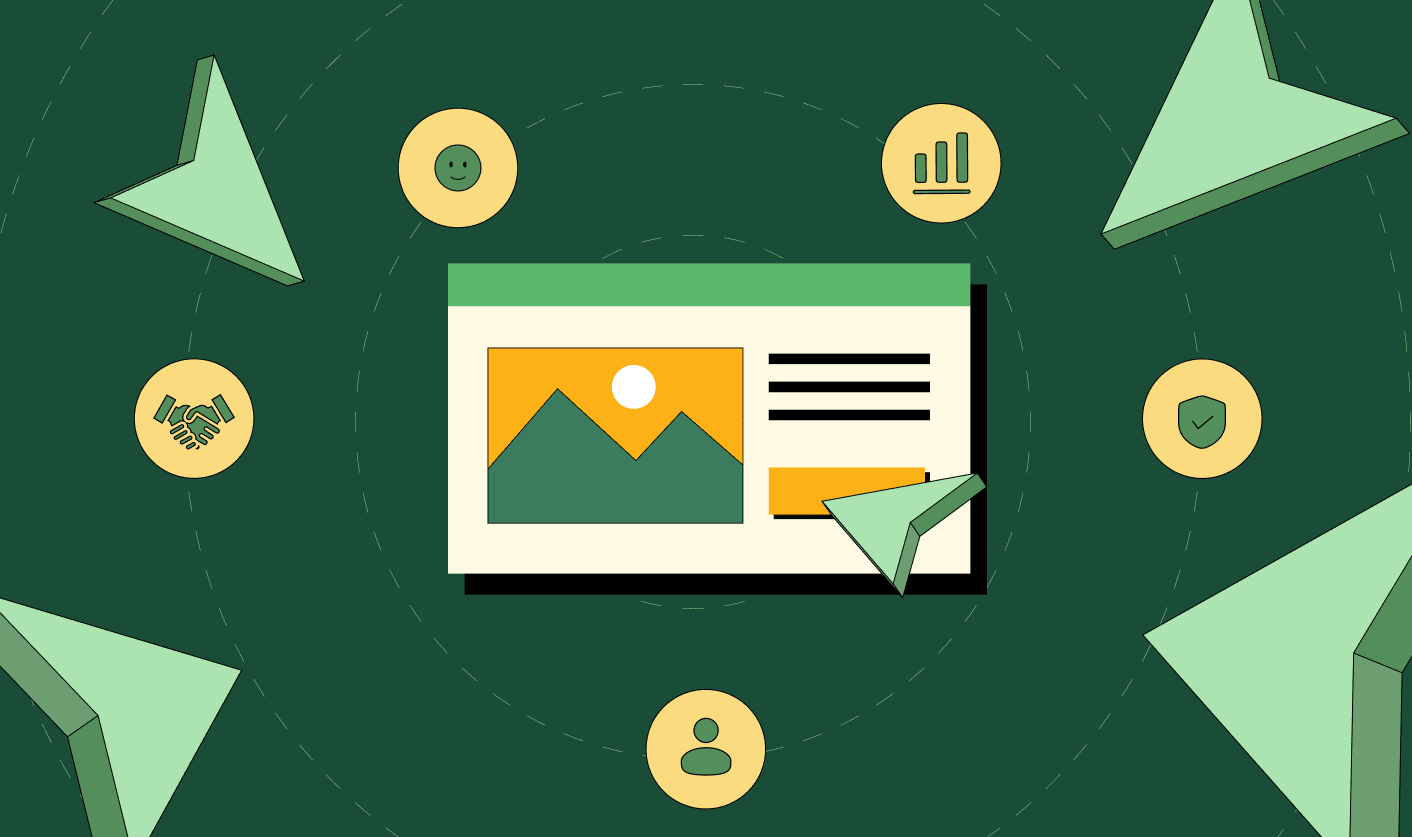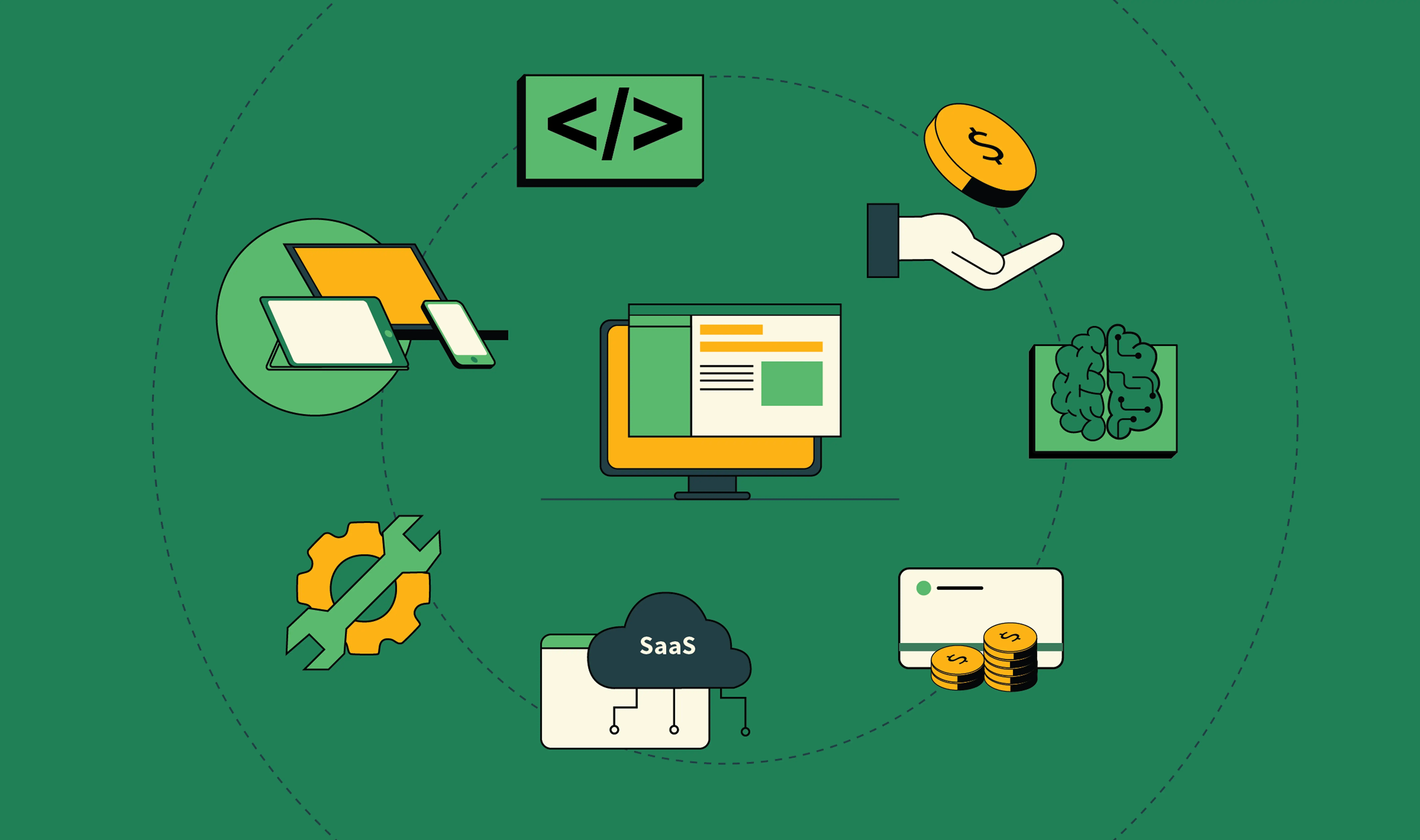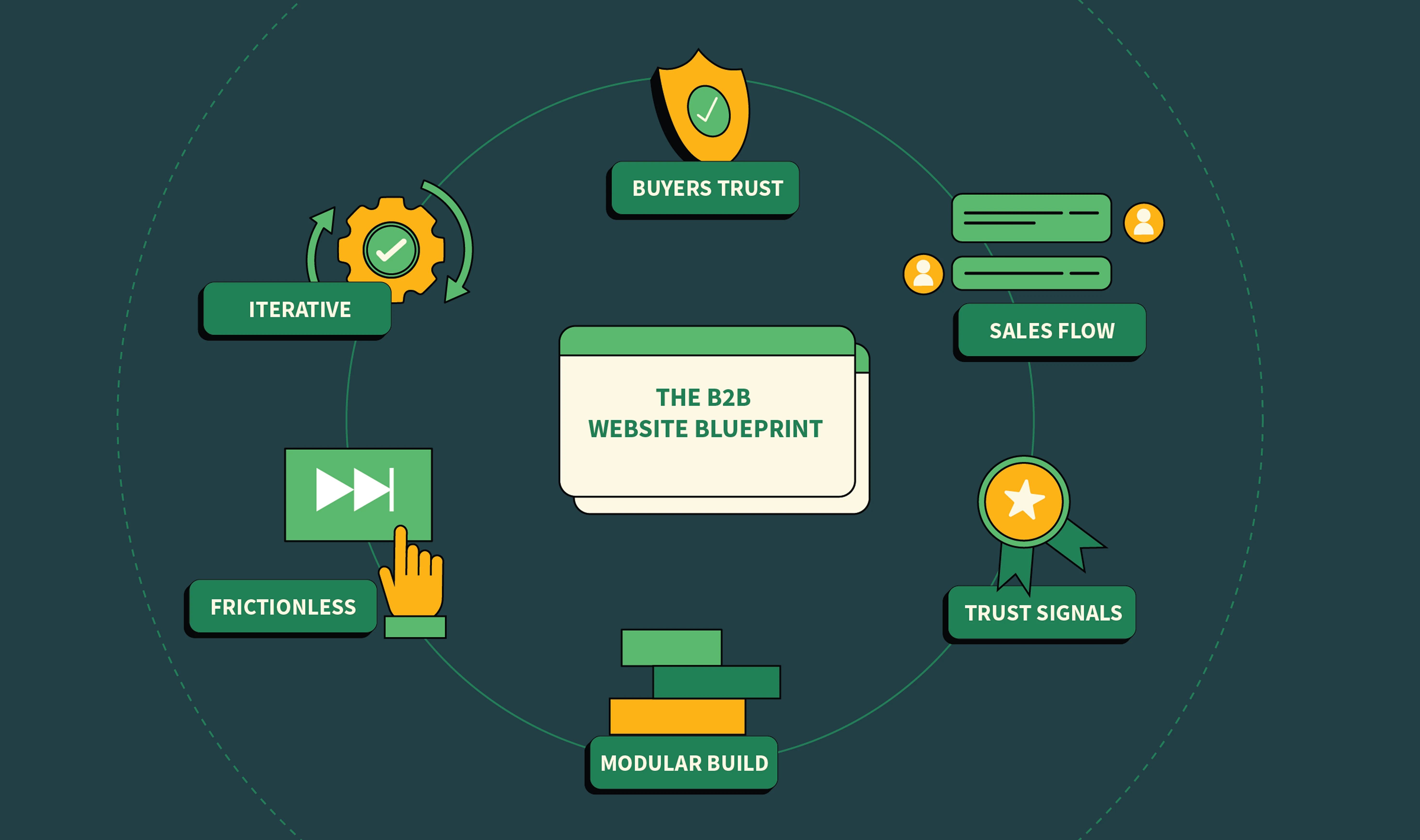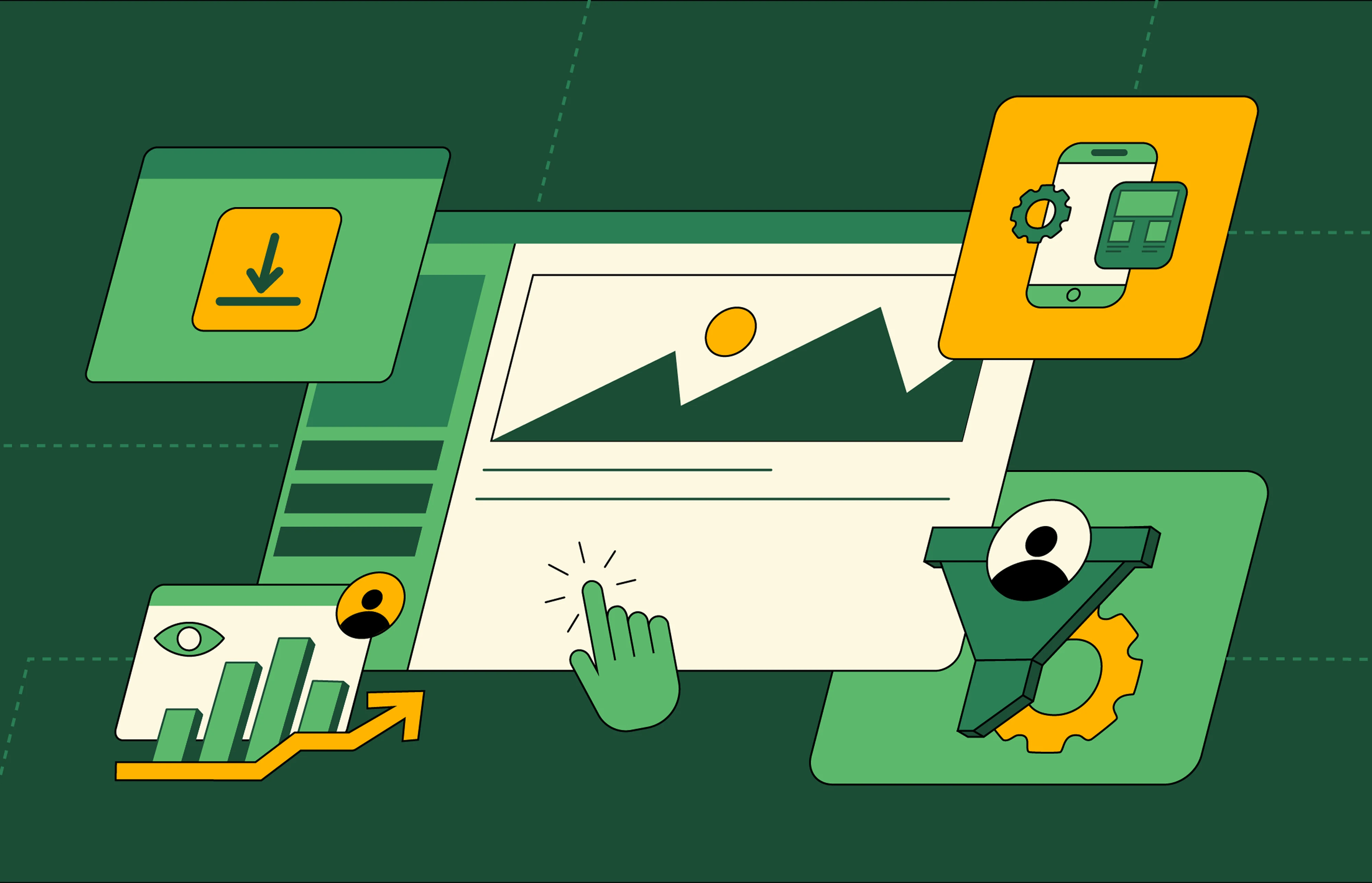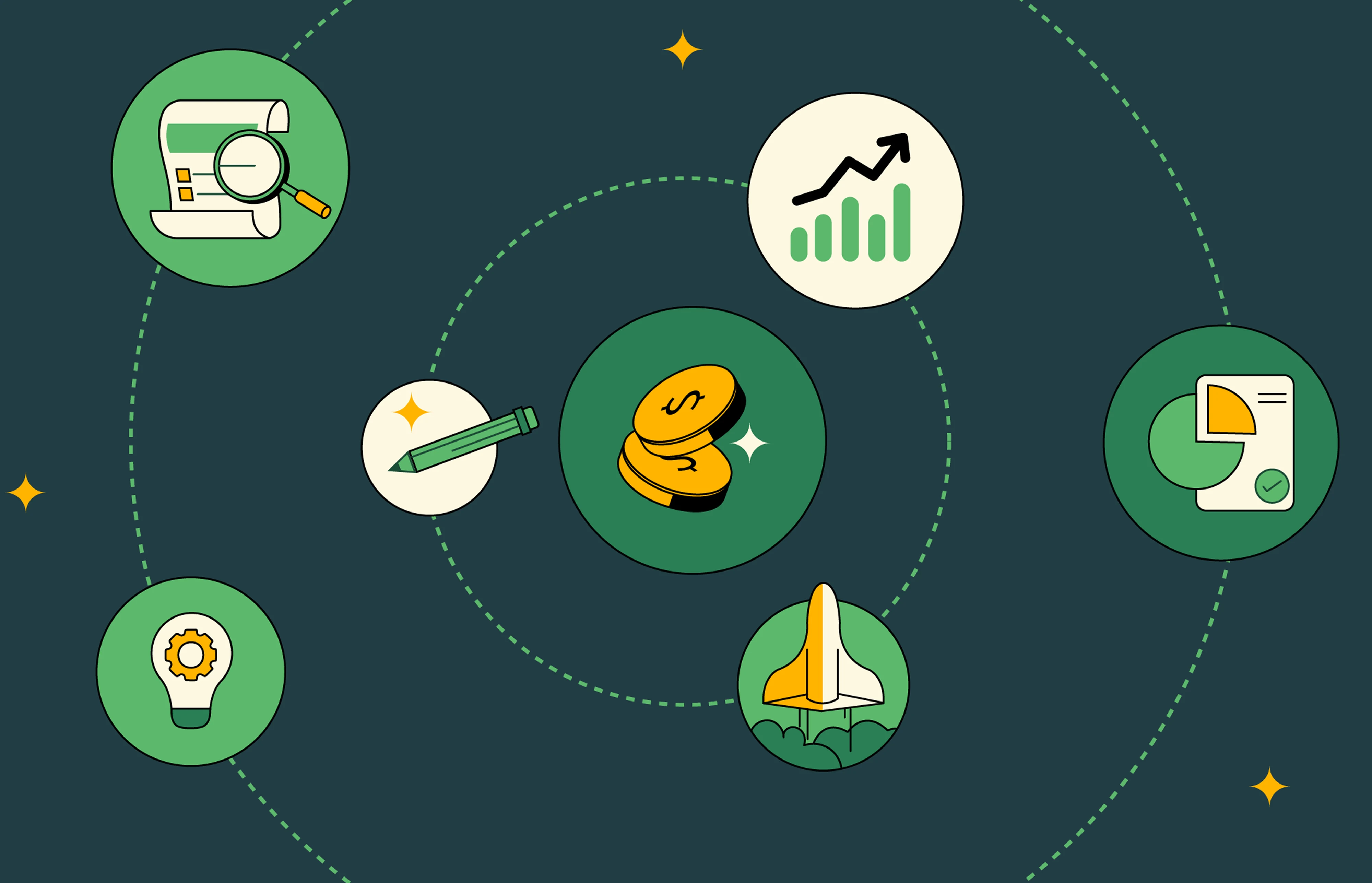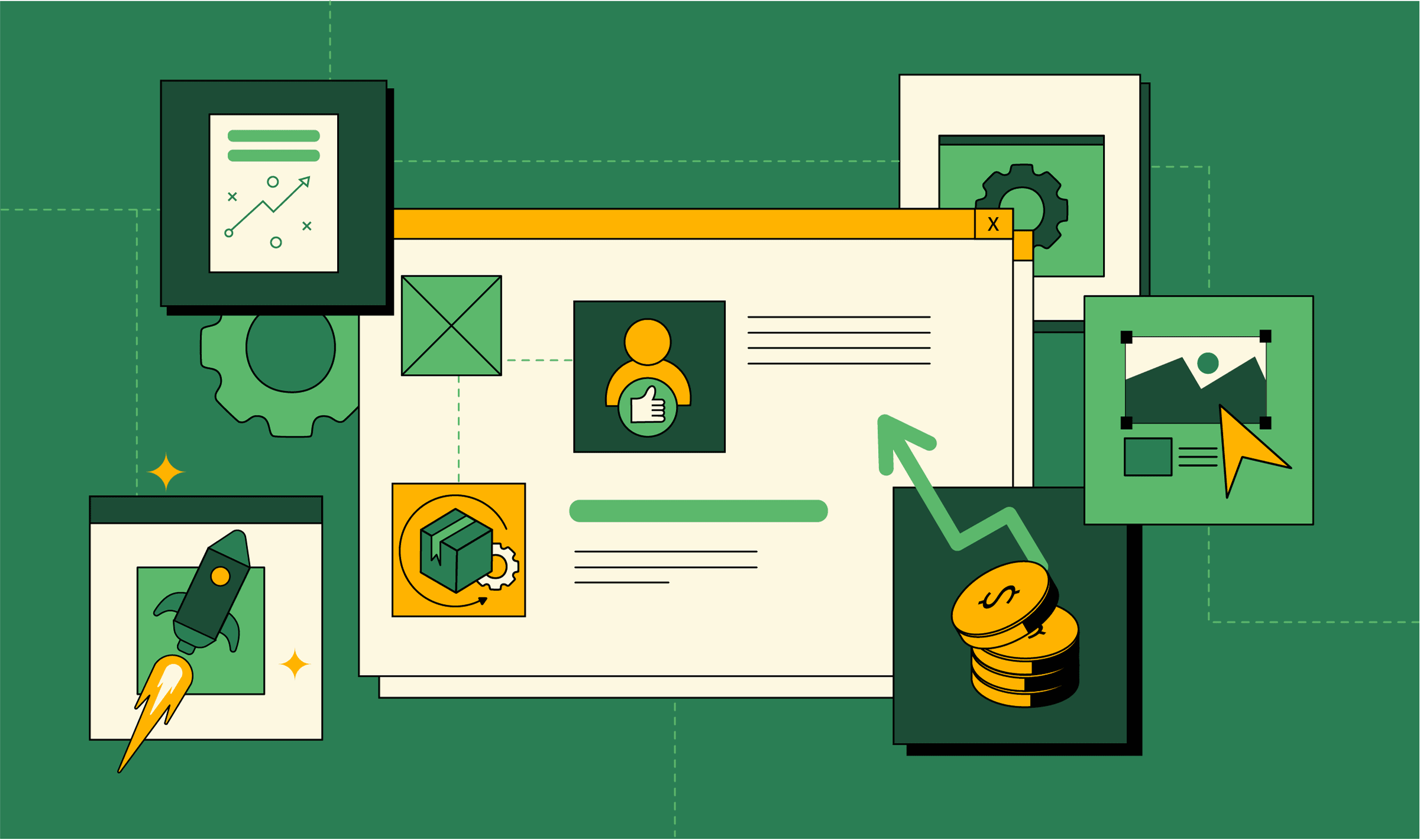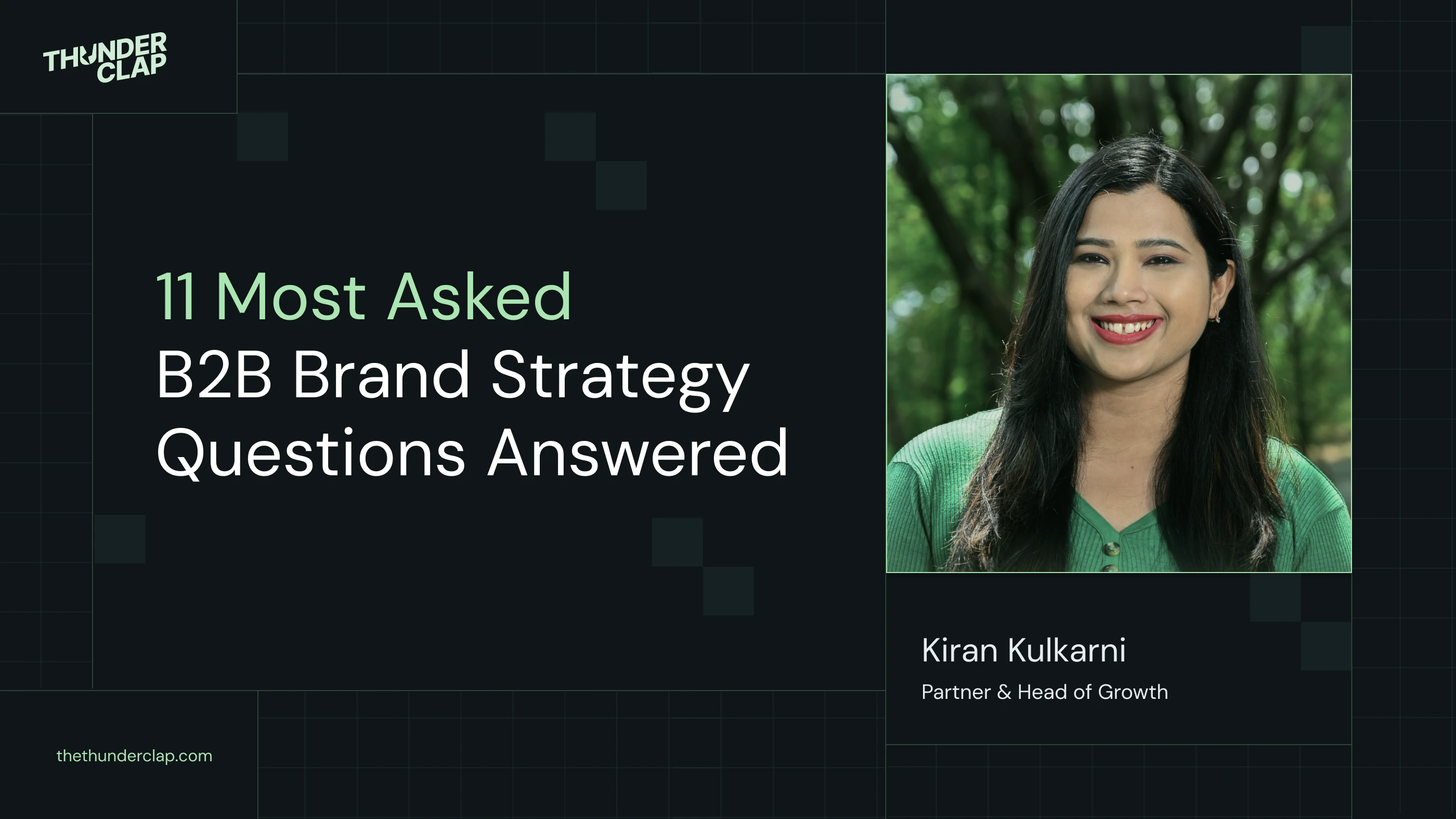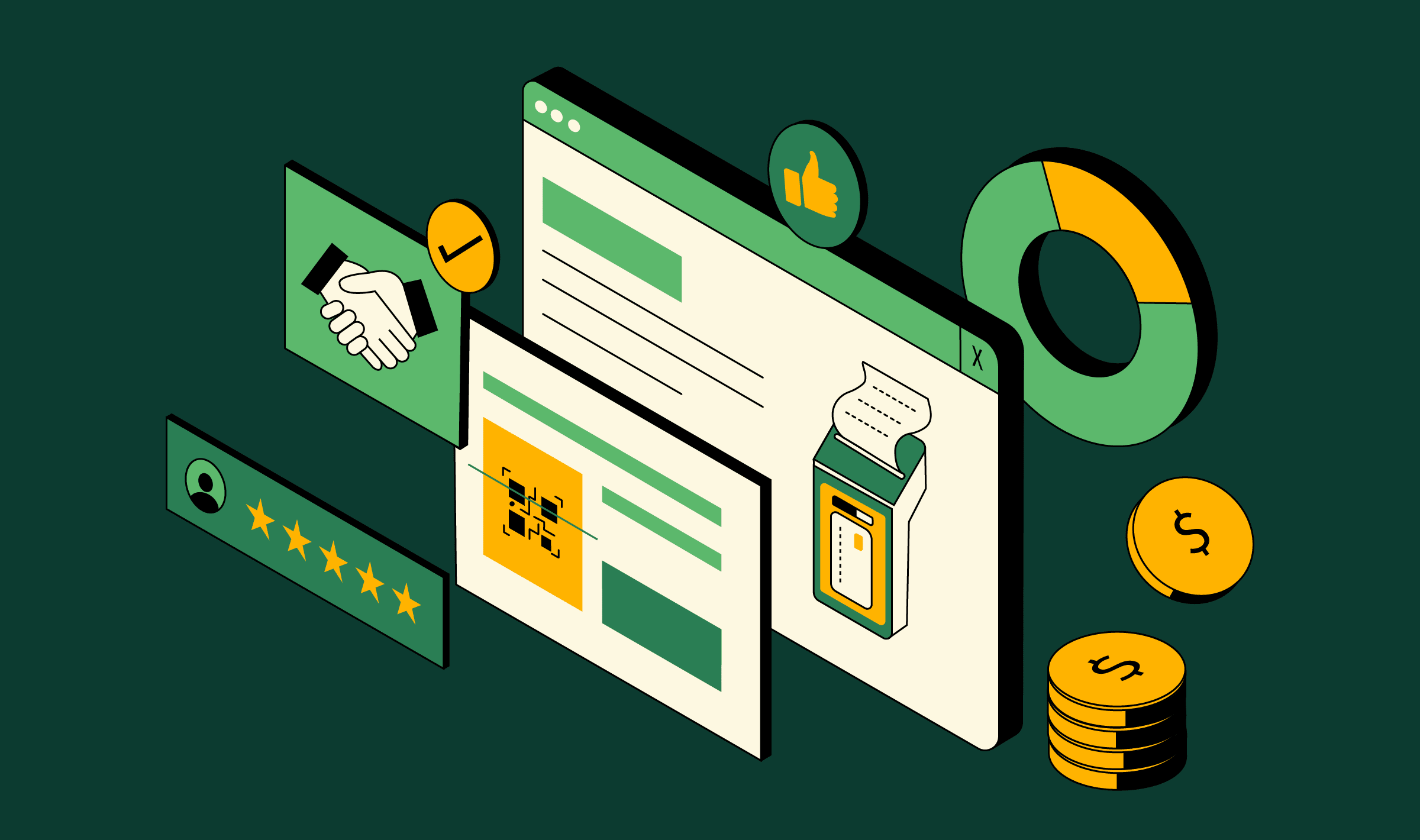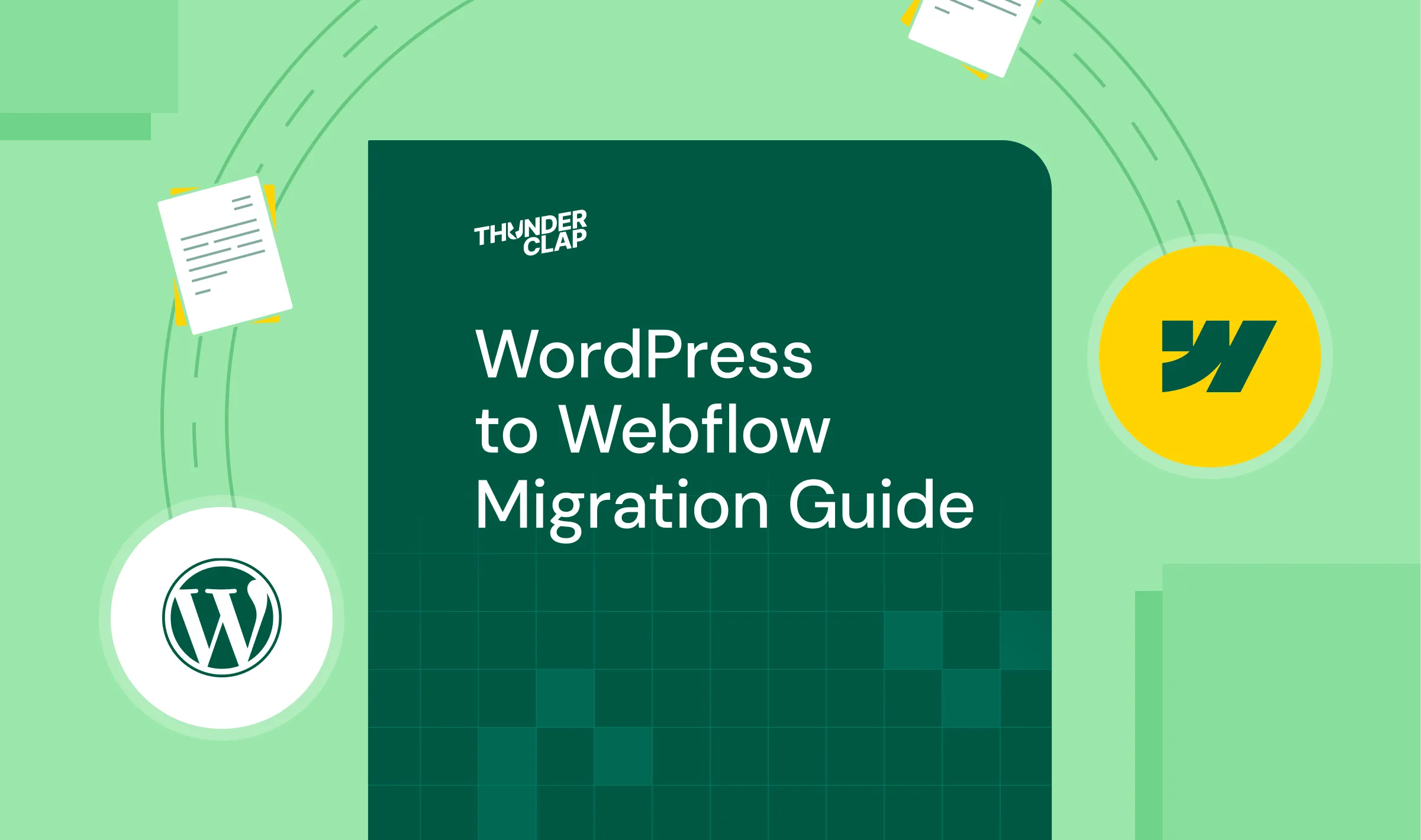A Complete Guide to B2B Web Design Best Practices
.png)

If you work in B2B SaaS, you might have heard that the B2B buyer’s journey is complex and non-linear. B2B SaaS is a space filled with tools that can potentially impact your business and contribute to the bottom line. In 2024, there are said to be over 17,000 B2B SaaS businesses worldwide!
While the number is staggering, what it indicates is the market is huge and buyers today have ample choices to choose from. Your website design and user experience then prove to be an important factor that can influence their purchase decision.
In this article, we’re going to deep dive into the B2B buyer’s journey and how to leave a lasting impact on your buyer to simplify their decision-making. Look for the examples we share and the best practices we talk about to see an uptick in your conversions and user engagement.
What is B2B website design?
Before we dive into design, let’s understand the B2B buyer’s journey a little more clearly. As we’ve established before, the B2B buyer today has numerous choices to choose from. Then why are the sales cycles long and need numerous touchpoints?
The B2B buyer requires a good mix of digital and human interactions throughout their journey. The process includes product adoption by the organization, considerable investment with an estimated ROI, buy-ins from multiple stakeholders across the organization, etc. All these factors make the buyer journey complex and with the increasing choices they have today and the frugality or effectiveness to spend their budget, the B2B buyer is more conscious today of making the right purchase decision than ever before.
Research says, 90% of B2B buyers research 2-7 websites before making a purchase. The first action you’ll take after hearing about a business or a tool is to google it. What happens if the website design is unappealing or the site takes forever to load?
One misstep and you’ll be out of the consideration game. The B2B buyer’s journey, like every other marketing journey, goes through the same phases - awareness, interest, consideration, purchase, and advocacy.
HubSpot seems to think that a B2B buyer will have around 8 touchpoints with your brand before they finalize the purchase. Your website can serve them at various stages of their journey. Hence, it’s critical to think about your design and web development.
Website designs differ significantly in B2B than they do in B2C. Unlike B2B, B2C purchase cycles are shorter, aim for immediate emotional engagement, and are mostly targeted towards individual consumers.
B2B websites however need to appeal to multiple stakeholders, highlighting industry expertise, and feature in-depth content, with a design that focuses more on professionalism and functionality.
The goal of a B2B website should be to make the discovery and consumption of important assets as simple as possible for your B2B buyer. This includes simplifying navigation, having structure, well-informed layouts, social proof, case studies, and a high-performing website while maintaining brand differentiation.
Here are a few examples of B2B SaaS brands that have gotten it right. Grab your notes and write away!
List of Examples of B2B Web Designs
1. Asana

A clean and user-friendly interface helps Asana’s users to easily find and consume the information they need. The intuitive navigation and the compelling visual storytelling elements featuring real customers only makes the user experience more authentic.
2. MailChimp

Mailchimp’s website reflects the brand identity with a strong focus on value proposition and credibility. A structured layout with key elements like social proof, impact metrics, and resources makes the content consumable for the users instead of overwhelming.
3. Unity

The immersive experience right on the hero fold never fails to hook the users when they first visit your website. Since it’s a creative platform, Unity has taken the liberty to showcase what using their tool can get you instead of overly focusing on content that talks about features and benefits.
4. DocuSign

Designed with clarity and simplicity, DocuSign's website is yet another inspiration for you. The simplified navigation just focuses on the one product they want to bring notice to while showcasing prominent CTAs. With an intuitive navigation to explore their website seamlessly, the website also features a chatbot to aid user’s journey.
5. Zendesk

Unlike a faceless product website that talks about its features endlessly, Zendesk decides to keep it simple. Featuring humans that don’t appear stocky, Zendesk includes important elements like social proof, interactive product demos, and resources in a structured way that can influence the B2B buyer while maintaining a consistent brand experience.
{{specficService}}
6. Dynatrace

The vibrant use of colors and clean and minimal interface make the website easy to play with. It also effectively uses real estate with transitions that justify-content without making it seem too much to read through. A clear sneak peek into the product sets the expectations right from the get go.
7. BlackLine

A simplified layout with streamlined navigation aids user experience. A minimalistic color palette brings users’ attention to the content that is shown on the website. Blackline focus on customer logos, impact metrics and reasons why user’s should consider Blackline ensure creating good recall for the brand.
8. Datadog

An immersive animation of the hero can hook the user and make them curious to know more about the platform. A clear focus on a primary CTA and dynamic representations of the features only add to users’ curiosity.
Now that you have an insight into what goes into building an effective B2B website, here are 10 best practices for you to get started today!
10 Best Practices for B2B Web Design
1. Understanding Your Audience
Perhaps this is a no-brainer, but often gets missed out. If you are targeting CEOs and leadership of your potential customers, having casual messaging, with unprofessional elements might not be well received. Find a couple of ICPs (Ideal Customer Profiles) you want to target and chart out your visual design to appeal to them and appear functional and professional.
{{specficBlog}}
2. Strategic Planning and Goal Setting
Even though a website is an important asset in your arsenal, we’ve seen not a lot of thought and resources go into maintaining it. What good is a website if it is not serving a purpose? Once you have your target audience decided, finalize what goals they care about and create a website strategy on how you will influence and achieve these.
3. User Experience (UX) Design
The B2B buyer’s journey is complex as it is, your only job is to make exploring your website as simple as possible. Keep the navigation easy to browse through, and improve discovery for assets they care about like testimonials or case studies. Don’t add a lot of content that can be overwhelming to read, or don’t use over-the-top colors or transitions.
4. Visual Design Principles
An important factor to consider is your brand identity and consistency. Your website is one of the numerous touchpoints where your potential buyer interacts with you. Creating a completely different visual identity can hamper the recall of your ads, events, or offline collaterals. Ensure visual design principles like hierarchy, simplicity, readability, and accessibility are well executed.
5. Content Strategy
Content is important to your buyer at all stages of the user’s lifecycle. When they aren’t aware of your product, your feature pages and solution pages give them the necessary insights. In the consideration and interest phase, they would like to read more about the impact you have generated for other renowned brands. Finally, to solidify their decision, they might look for credibility symbols like reviews, media coverage, and awards. Ensure that all these pieces are easier to find when they are needed.
6. Technical Consideration
Over 60%of website traffic comes from mobiles. If your website isn’t optimized for mobile or appears distorted, it might sully the impact of all your marketing efforts. Create a website that is fast to load, passes all the vital checks, and keep optimizing for performance.
7. Lead Generation and Conversion Optimization
Along with all the efforts you take around visual design, there are significant B2B conversion optimization strategies to be made around conversion. If you are not clear on what you want your users to do, a beautiful website is still not going to influence your sales pipeline. Identity goals like demo requests free trials, and asset downloads that you want to push and align other elements of the website accordingly.
8. Building Trust and Credibility
As B2B purchases require significant investment and buy-ins from multiple stakeholders across the organization, it’s important to showcase trust signals across the website that build credibility. Got featured on renowned platforms like Gartner, Forrester, or G2? Show them on the website. Feature top customer logos you serve, what your customers say about you, security credentials, and everything that your users care about.
9. Integrating B2B Tools and Platforms
If your users are evaluating your tool, there must already be some tools that they use in day-to-day operations. Your job then becomes to convince them that your tool will not create further hassle and will integrate with any other platforms or systems they have in place today seamlessly. Feature these integrations in a separate section and talk about the joint value proposition you provide.
10. Ongoing Maintenance and Updates
Creating a B2B website is not a one-time job. You have to continuously monitor if the website is delivering results as expected and keep fine-tuning as and when you find areas of improvement. Use analytics tools like Google Analytics, Microsoft Clarity, or Hotjar to dig deeper into user behaviors.
{{ctaBlock}}
Final Words
The goal of your website isn’t just to appear beautiful, it also has to deliver results on the metrics you set up to represent user engagement and conversions. Using the tips mentioned above coupled with the leading brands using them in practice can help you take your website ahead of your competition and be effective as a touchpoint.
Found the blog interesting and want to see how ThunderClap's B2B web design services take their clients' websites from 'Blah' to 'Aah'? Get in touch now.



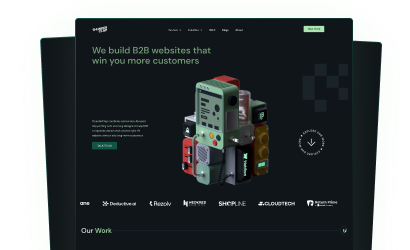

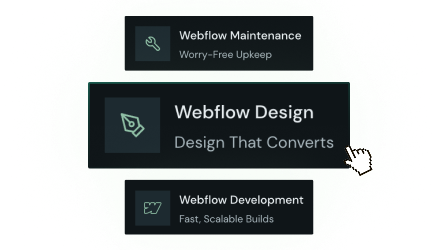
.png)
Browse Similar Articles




Interested in seeing what we can do for your website?





.webp)


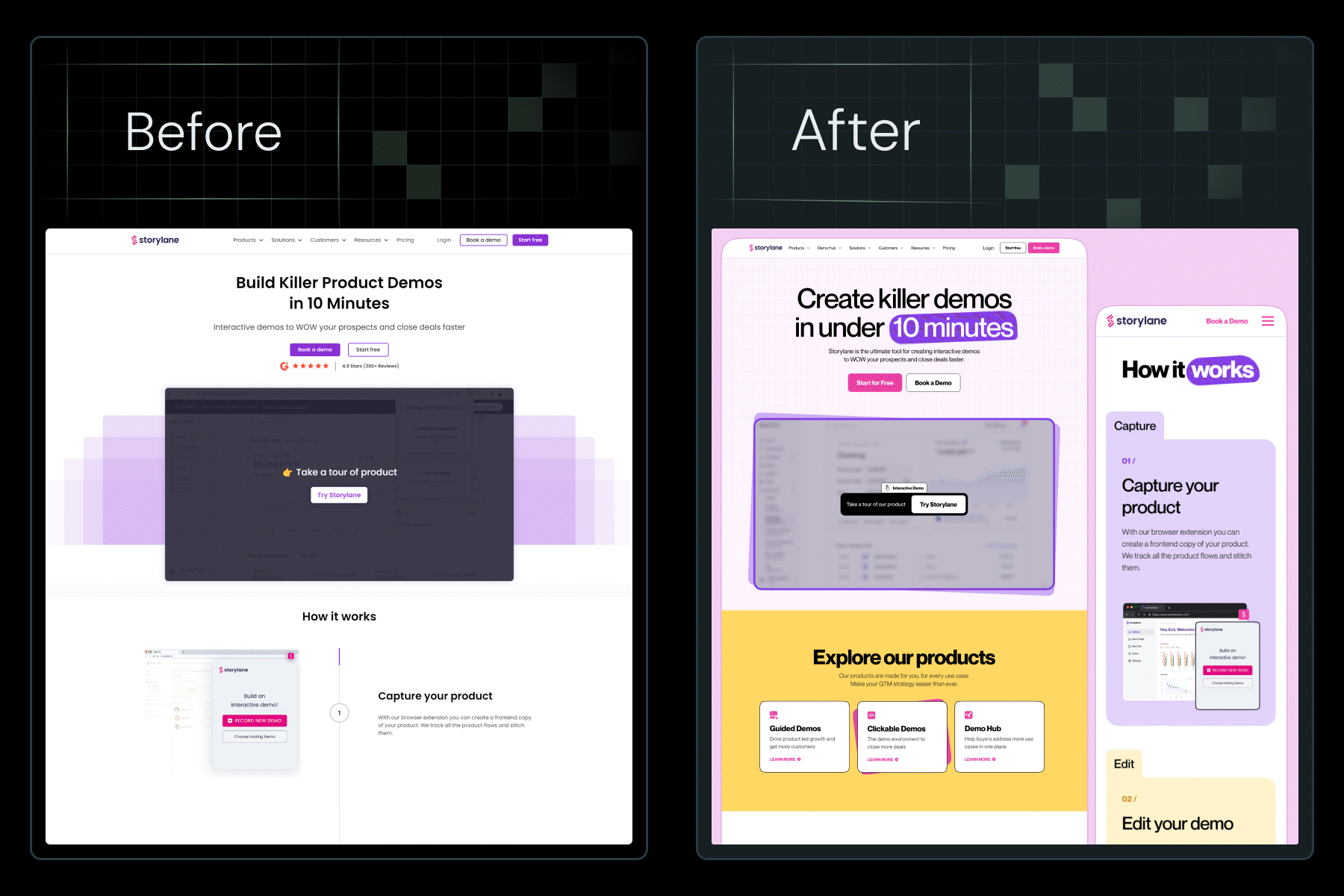








.svg)













